Purchasing an advance ticket for the train to Mawlamyine took up forty-five minutes of my time, required visits to eight different windows and entailed conversations with six different railway employees.
It wasn’t a product of developing world bureaucracy, quite the opposite in fact. Signs at Yangon station urge locals to “Warmly Welcome & Take Care of Tourists”.
Imagine that in America?
YANGON’S ADVANCE BOOKING OFFICE
Myanmar Railways simply doesn’t use computers. Hand-written ledgers are standard practice across the country and each route had just one ledger. To buy tickets for a specific destination, one had to visit a specific window.
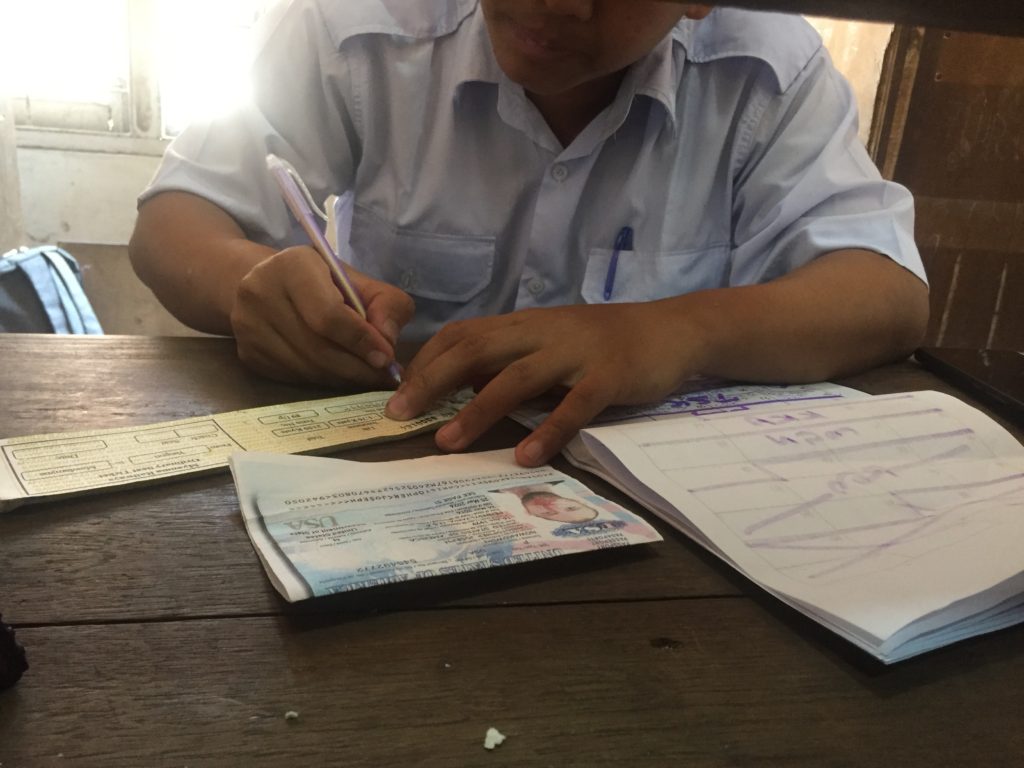
Burmese script spelled out destinations above the counters, but deciphering the script is about as difficult as it gets. If I manage to comprehend the odd number I’m feeling pretty smart. Full-on words? Forget about it.
My difficulty lay in finding the correct window.
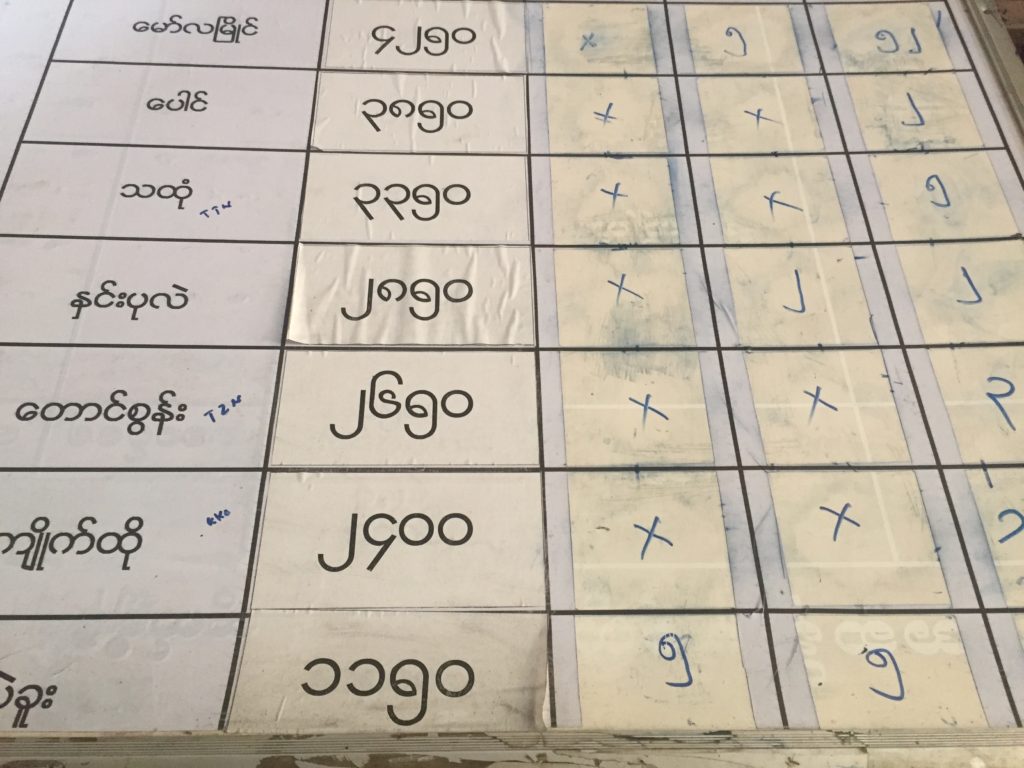
Turns out the system was rather logical once I moved beyond the Western do-anything-anywhere-at-any-time attitude. Southern trains on the right to northern ones on the left. Ordinary class on the long wall ahead, upper class the short wall adjacent. Makes sense as there are three times as many ordinary tickets available. I didn’t figure this out until the seventh or eighth counter visit, but now I know for next time.
I think.
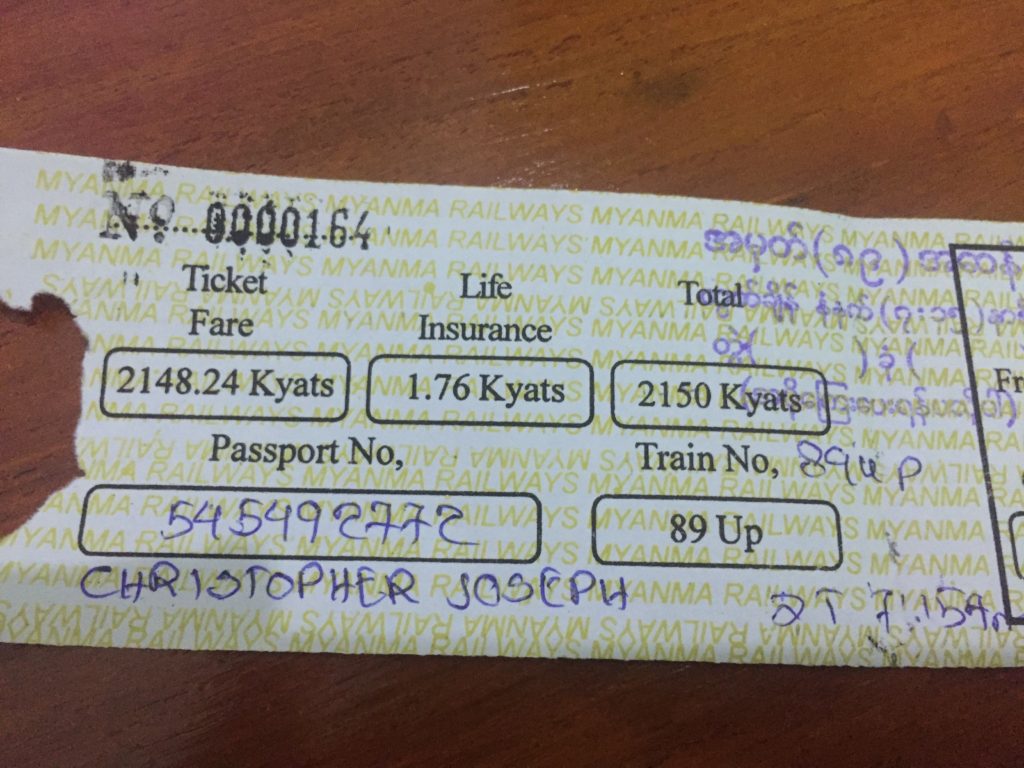
The ticket cost 2150 kyat (US$1.42).
It wasn’t a bad price for a journey of 9 hours and 35 minutes. Being Myanmar, that’s about par for the course for long distance trains. Granted, I had to settle for ordinary class, so I was going to be riding cattle car. Think hard wooden or plastic benches instead of reclining, most likely broken cushioned seats.
YANGON TO MAWLAMYINE
I was about twenty-five minutes early for the 07:15 departure the following morning and had plenty of assistance immediately upon exiting my taxi.
“Where you go? Ahh, Mawlamyine platform three… “
But first I checked in with the ticket office.
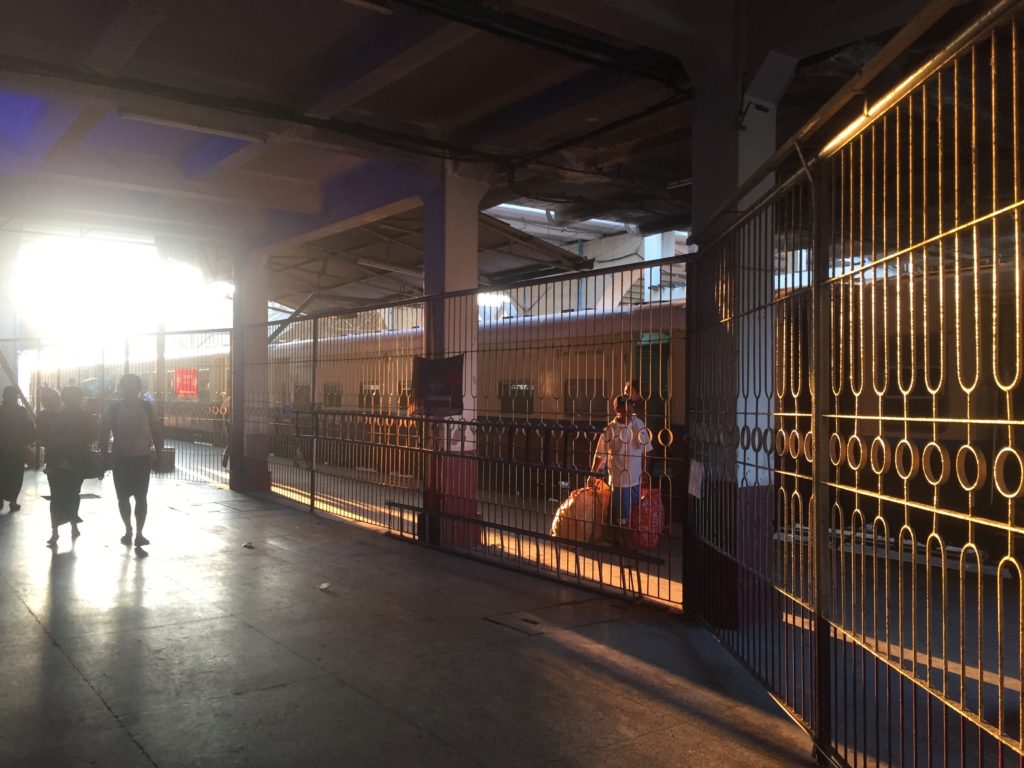
The friendly attendant begged off for a moment and roused an English-speaking colleague who was asleep in the back of the office. A few flips through the hand-written ledger and one blank spot caught my eye; a single upper class seat remained. As such I purchased a second seat on the train, this time for 4250 kyat (US$2.81).
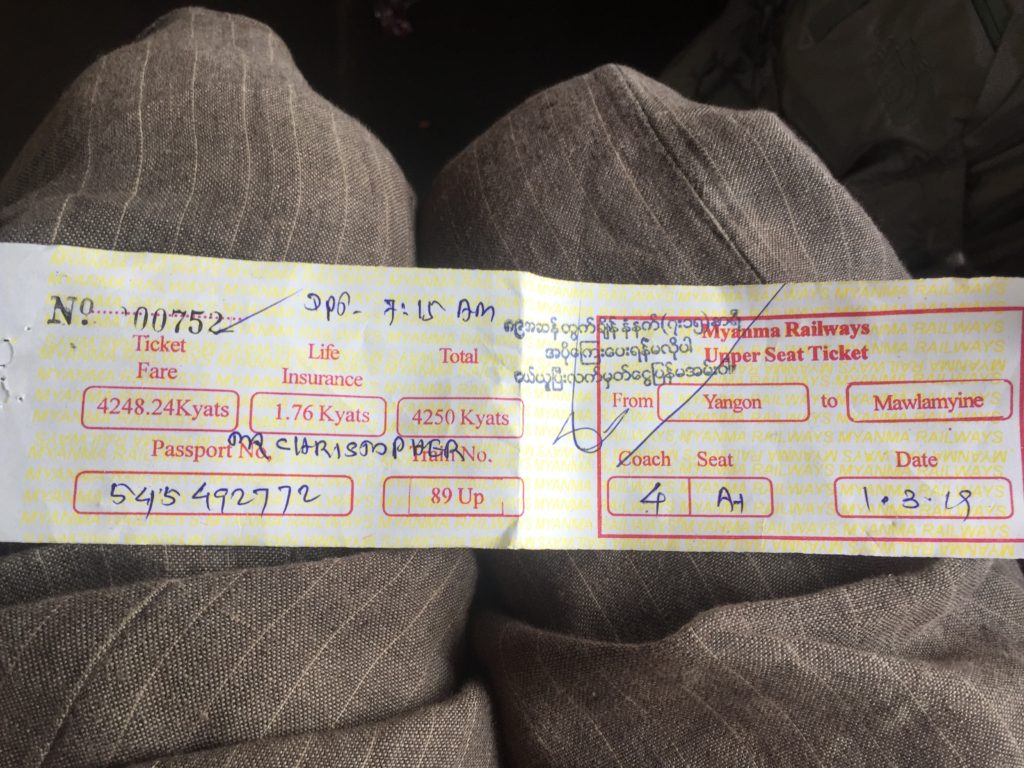
For just 6400 kyat (US$4.23) I had two seats, my choice of classes and an all-day trip south into the countryside ahead.

BREAKDOWN IN BAGO
By 1030am we had been sitting on the tracks at Bago for over an hour. No one had the faintest idea why we were stopped, what was wrong or when we would be moving again.
Luckily we stopped in the shade and I took advantage of the delay to squeeze in a nap. Any bits of sleep on Burmese trains were more a pleasant surprise than an expectation, so hey, what a fortuitous stop for my increasingly heavy eyes.
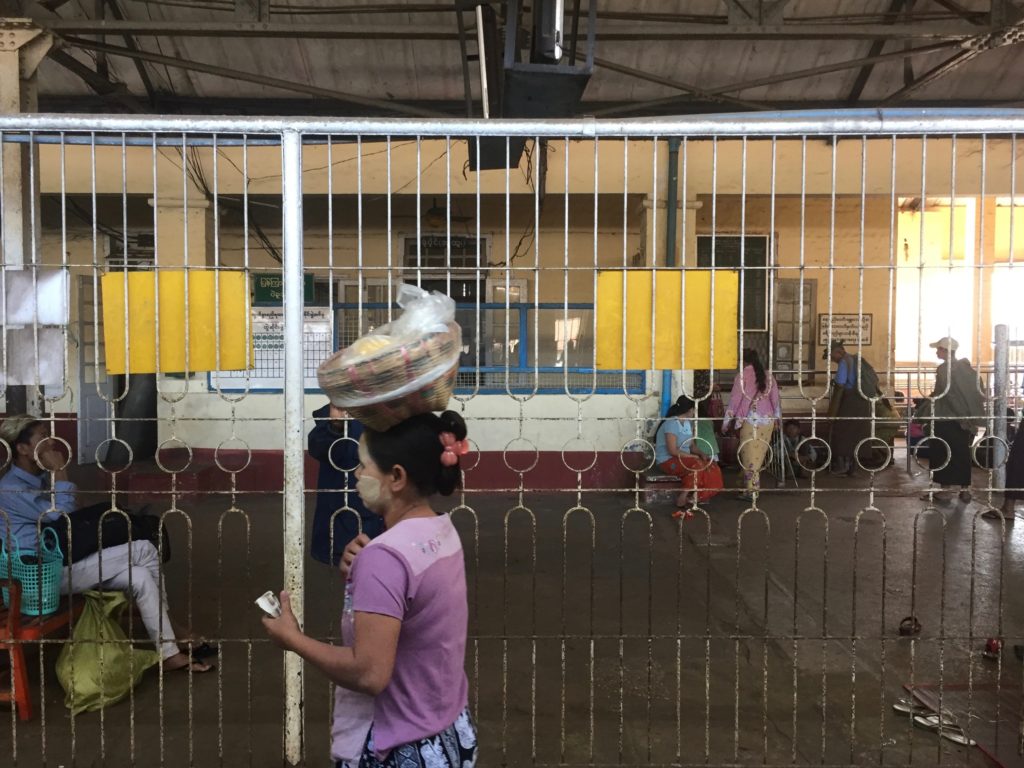
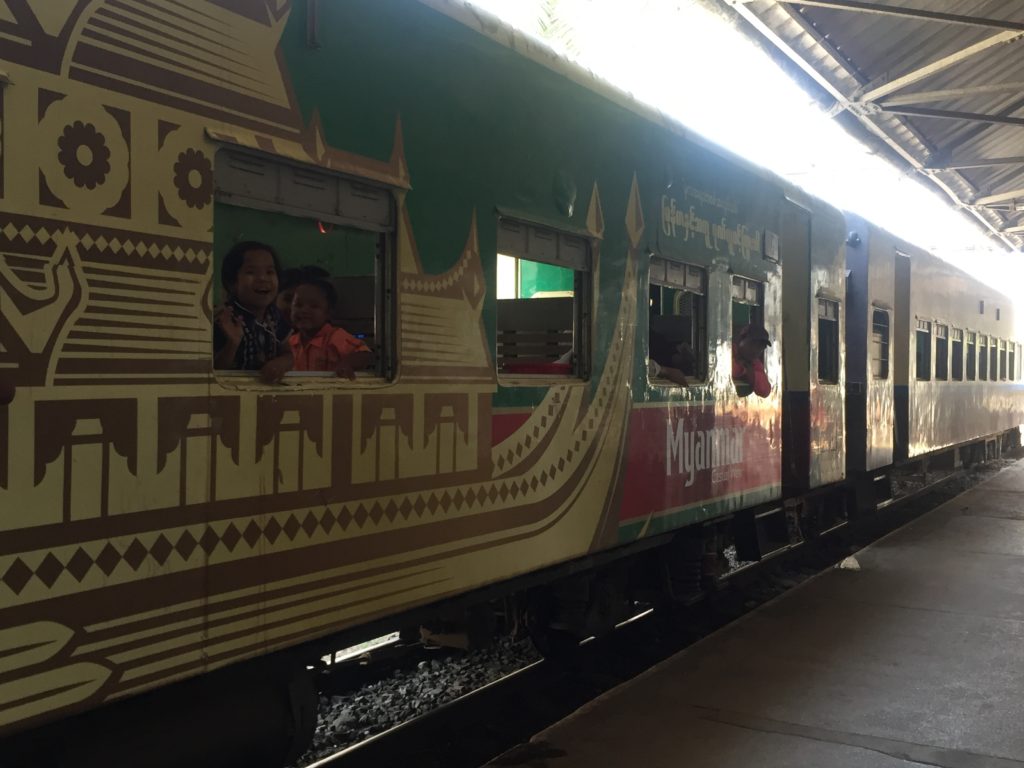
Burmese trains bounce and rock down the narrow gauge rails, jostling passengers about as if participating in a mild version of bumper cars. In fact, the train to Mawlamyine is notorious for totally ridiculous videos like this. Watch it. Seriously.
Myanmar has undertaken a rail improvement program over the past few years, so the train to Mawlamyine is no longer as crazy as that video shows.
Clips like that immediately rule out train travel for the vast majority of Myanmar travelers.
But I found it utterly intriguing.
How does the train even stay on the tracks?! Is the entire route like this??
So many questions, so few answers.
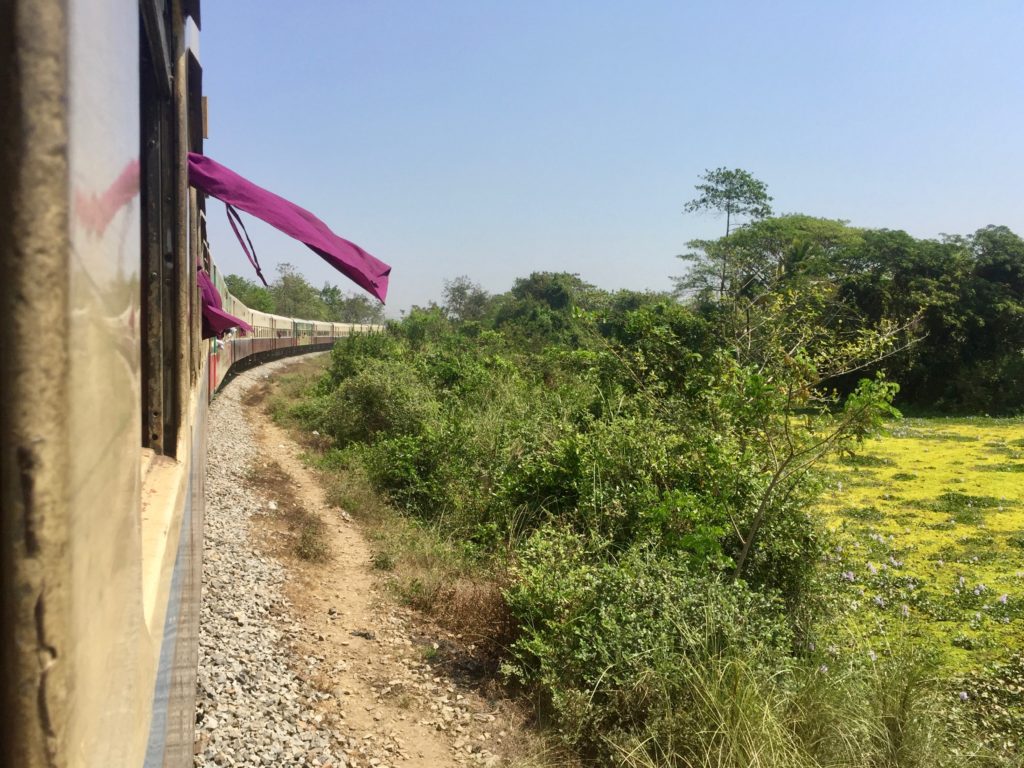
I woke from my nap to kids with thanaka on their cheeks laughing and playing in the aisles while a handful of notably less happy adults milled around the platform. I bought a chunk of watermelon from a vendor and immediately began dripping sticky fruit juice all over the dusty floor at my feet. A cheery mother across the aisle took notice and quickly saved the day with a plastic bag from her personal stash.

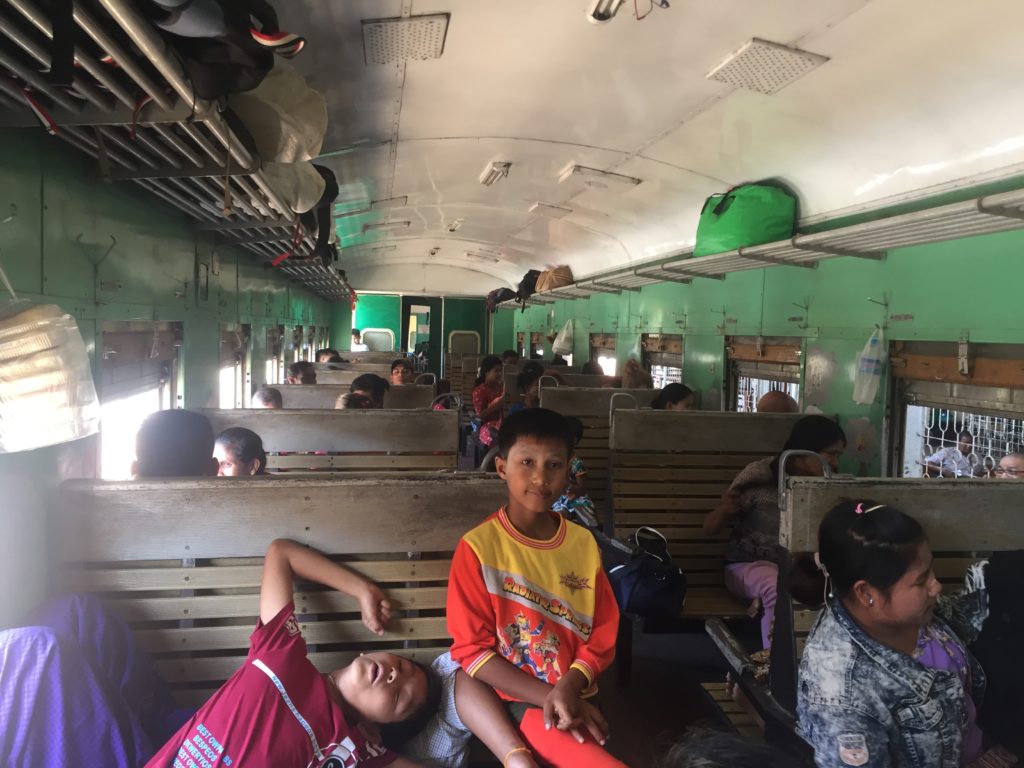
After ninety minutes of stillness I spotted a lone locomotive chugging slowly down an adjacent track. A few moments later a subtle bump in the train. The whistle blew loudly and we were once again headed for Mawlamyine, now with a new locomotive leading the way.
SOUTH TO MAWLAMYINE
Sophie was the only other foreigner around and caught a glimpse of what she thought to be a mouse scurry beneath her seat. I laughed and said I didn’t want to see it! I can deal with anything while traveling around Myanmar, be it rough trains, high temperatures, even a Rakhine State insurgency, but mice and rats strike a primordial chord deep within my being.
A bit later I swapped to the shady side of the carriage where a rodent friend was definitely taking up residence. Plenty of food crumbs and watermelon juice wound up on the floor and probably made for a rather agreeable mouse life.
But that was it for going barefoot.
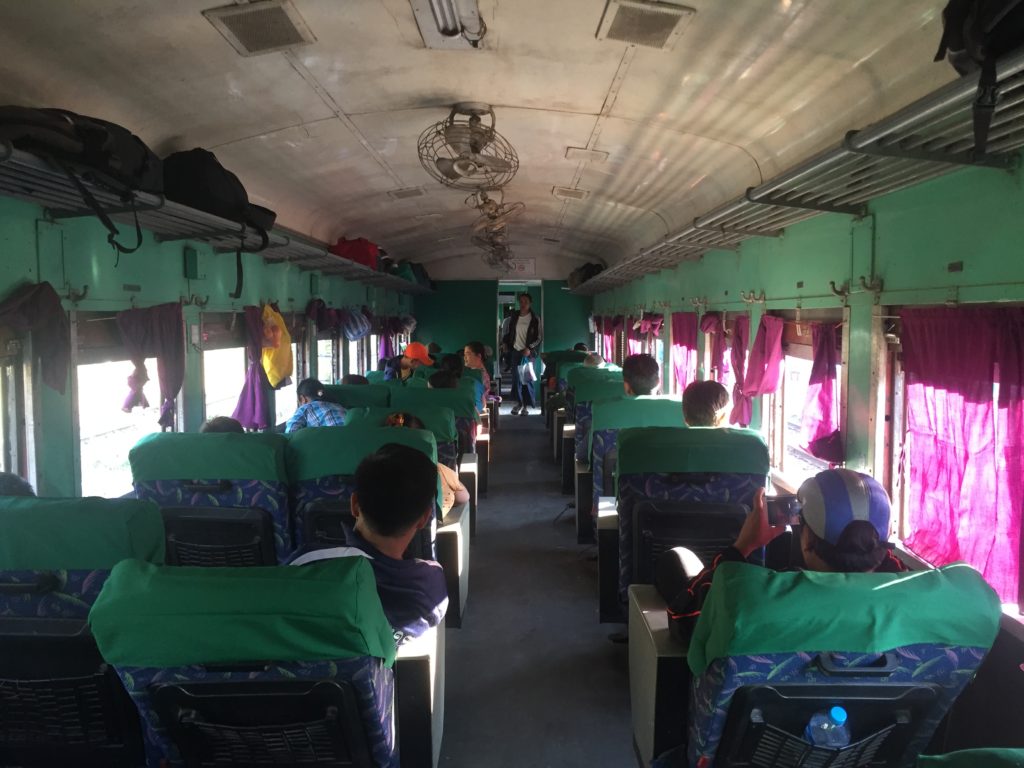
Myanmar was Sophie’s first country outside of Europe and the bus didn’t interest her. She was heading to a monastery in the hills outside Mawlamyine for a 10-day Vipassana meditation course. I was suddenly envious of her plans. That course has been high atop my to-do list for years, so we spoke of meditation and Buddhism, of picky travelers and the benefits of the train versus the bus.
I enjoyed her company.
KYAIKTO AND BEYOND
A constant stream of vendors balanced bulky loads atop their heads and hawked in the aisles. Whether you wanted sweet pastries, cold cans of Myanmar beer, fragrant curries, bottles of water, hot Burmese tea or even fried fish heads, it was all on offer. And right at your seat. A rolling market on wheels, the perfect re-introduction to Burmese food for my second visit. Cheap too. A veggie curry with rice set me back 600 kyat, all of forty US cents. And it was excellent.
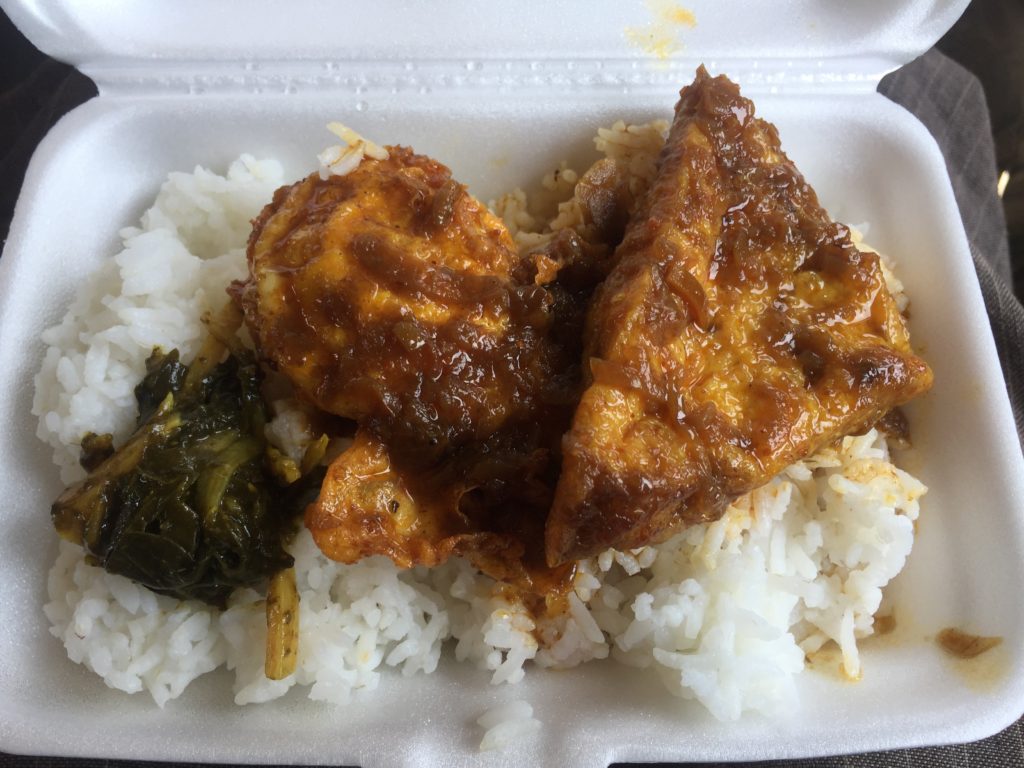
More Burmese trains, this time traversing Shan State’s stunning Goteik Viaduct
I hung out at the back of the carriage with the occasional smoker and enjoyed the wind whipping in through the wide open doors. A Yangon local curious about my journey chatted me up and detailed his pilgrimage day trip to the Golden Rock. By the time he alighted in Kyaikto I calculated us to be nearly two hours behind schedule.
But I didn’t really care.
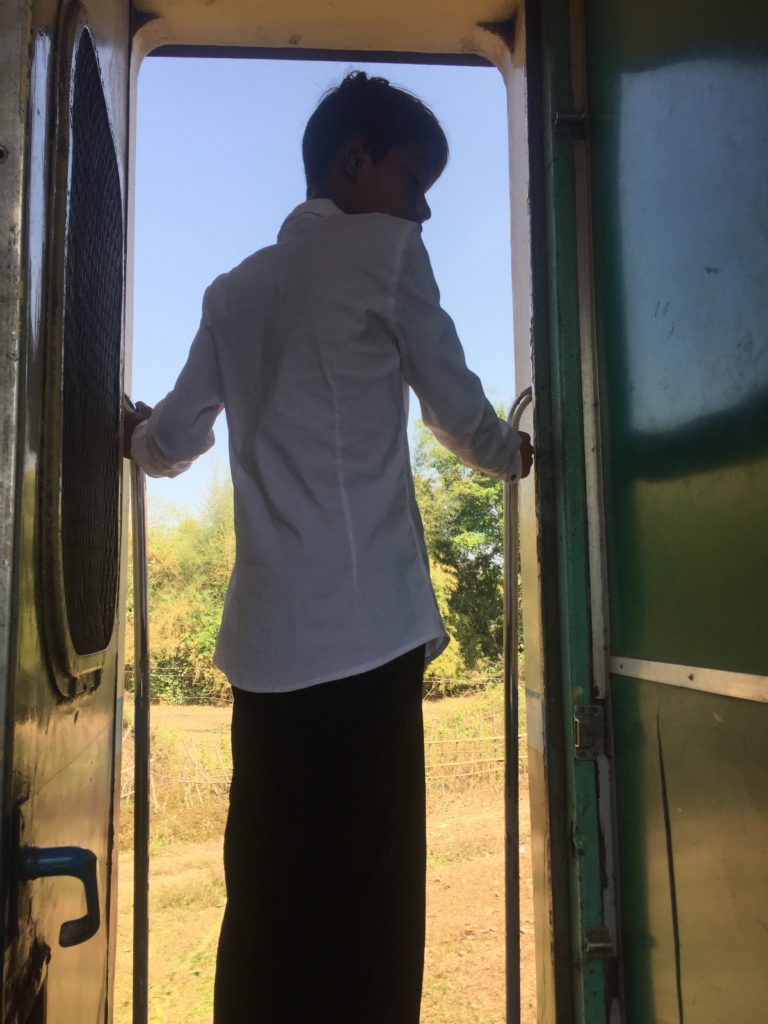
The scenery was hardly objectionable. It quickly changed from Yangon’s gritty urban core to green rice fields, expansive peanut farms and lines of swaying palm trees.

Thatch and bamboo villages receded into the distance as the train slowly negotiated its way through Mon State. Family rice farms gave way to lush marshland and the occasional river.
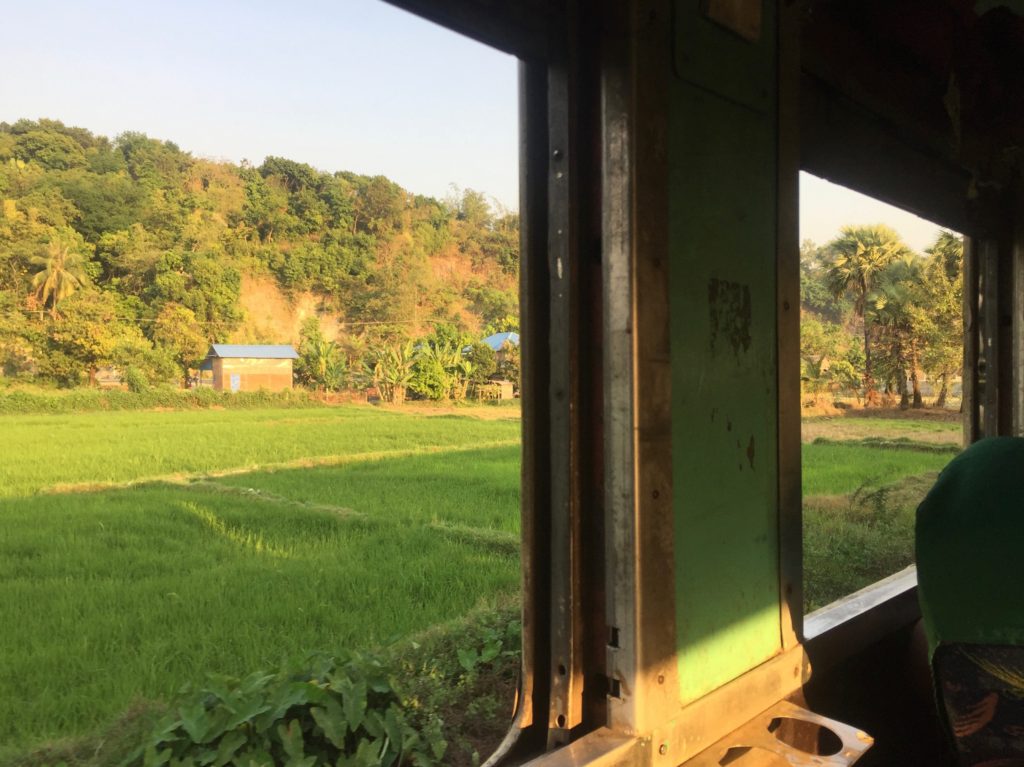
Wide open windows allowed for a consistently refreshing breeze to blow through the carriage. Gleaming sunlight streamed in and warmed my pale northern hemisphere forearms. The metal fold-down footrest attached to the next seat cooled the bottoms of my feet.
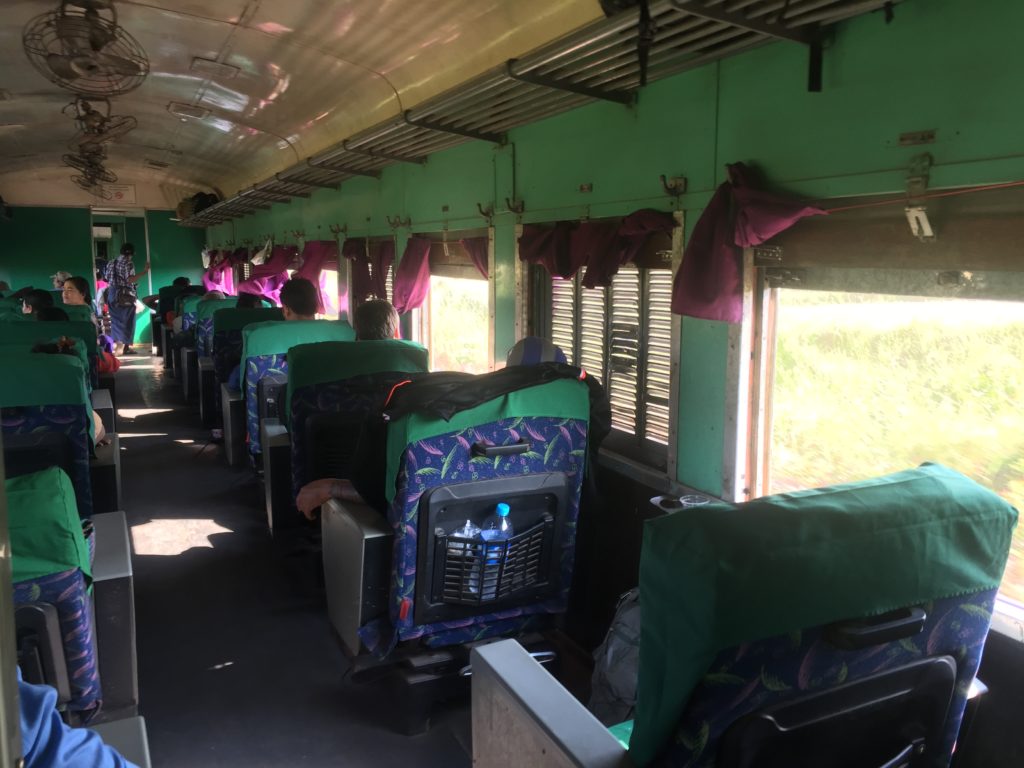
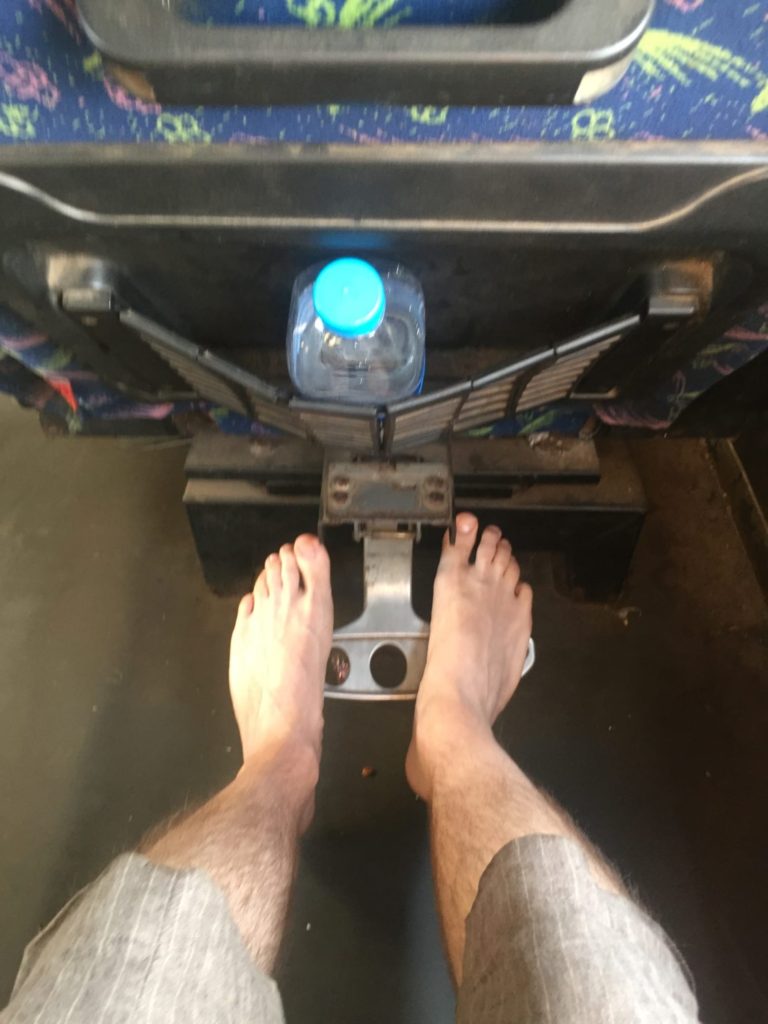
And so the day wore on.
People hopped on, but mostly they departed. The crowd thinned.
MON STATE
A family in front of me took to throwing individually wrapped candies out the windows. It seemed to be an expected practice as the groups of children awaiting the train’s passing indicated. The kids waved furiously from beside the tracks and hunted down sweets in the unkempt grass with exacting precision. Despite the grinding poverty of rural Myanmar, they appeared to be happy.
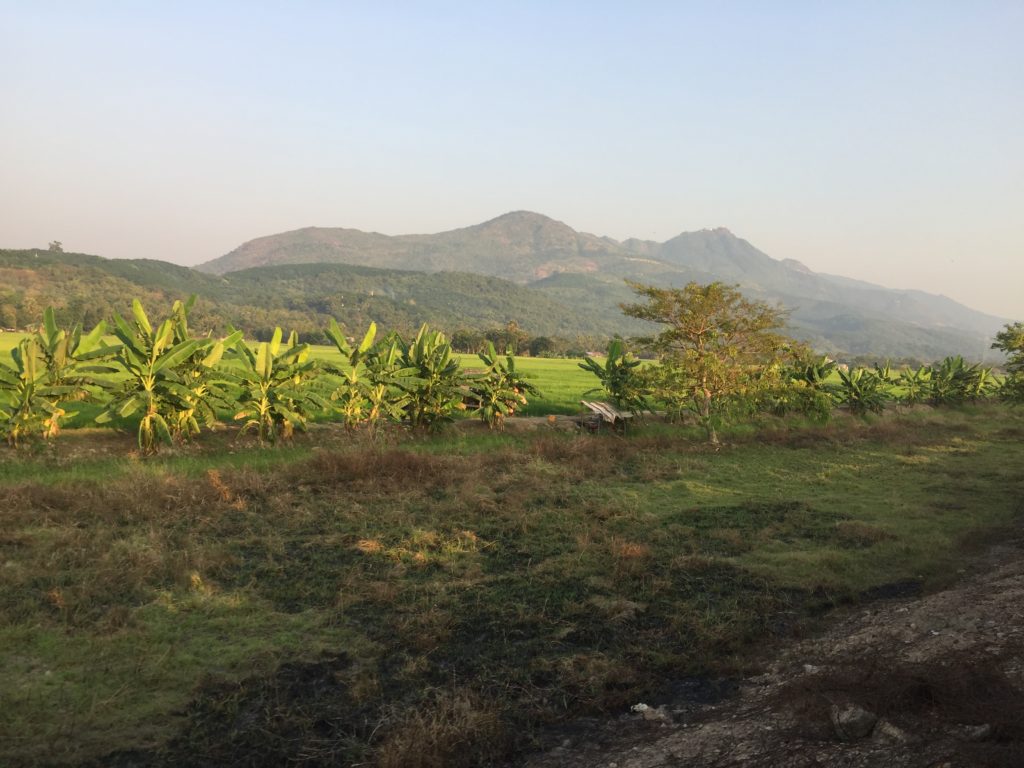
A man across the aisle sprawled over multiple seats and armrests like an ill-treated and forgotten corpse. But he slept.
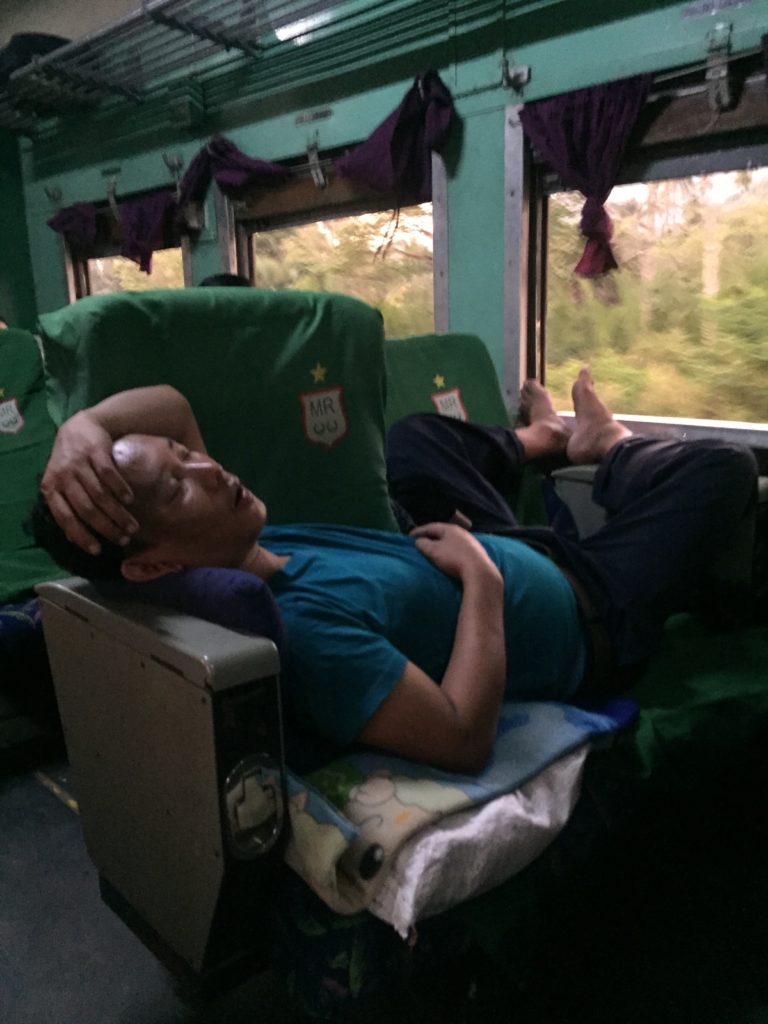
Two young brothers nearby cracked up as I mimicked his odd positioning. They did their best weird sleeping impressions as we all broke out into hearty laughter. Soon enough we swapped ear buds, the older one’s taste in Burmese rock music as good or better than my Irish rock selections.
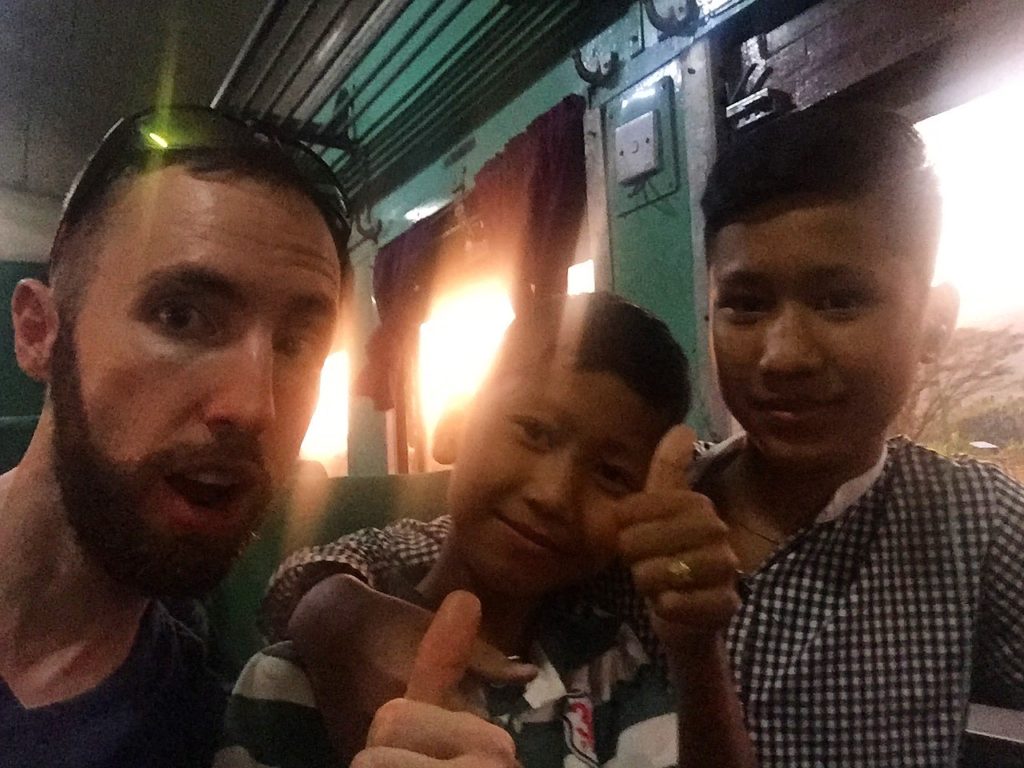
MINGALABA, MAWLAMYINE
The golden stupas of Mawlamyine began twinkling in the distance as we made our final approach across the single lane railway bridge in the dark. We click-clacked slowly into Myanmar’s third-largest city as the clock touched 730pm.
In twelve hours and fifteen minutes we had covered just 189 miles. Our average speed clocked in around fifteen miles per hour. Even without the delay in Bago we would have struggled to hit twenty miles per hour.
The train to Mawlamyine certainly won’t break any land speed records. But the experience is more than worth the potential time savings any other mode of transportation may provide.

A motorbike taxi driver commandeered me before I even stepped foot off the train. For 2000 kyat (US$1.32) he would deposit me at my hotel near the Thanlwin River, four kilometers away. We picked our way through the mass of humanity waiting to board the northbound train, taking care to avoid stepping on the stray dogs that hang around Burma’s train stations.
Sophie and I said our goodbyes and went our separate ways, she in search of insight and enlightenment in the darkened hills of Mon State, me off into the urban night, the glittering stupas of Mawlamyine framing the route.
DO IT YOURSELF
Two words about the train to Mawlamyine — DO IT.
Myanmar’s trains are one of the best ways to experience local life and mingle with the Burmese people. Everyone who says the trains are the “worst experience ever”, “awful” and “disgusting” are full of it. Let them take the bus. Trains are real life, in your face, up close and personal. Sign up.
Three daily trains connect Yangon with Mawlamyine. One of them carries on all the way through Ye and Dawei. There are no sleepers or dining cars on these trains, just seats and an array of vendors.
Yangon/Mawlamyine Timetable
Yangon / Mawlamyine southbound train
| train # | 89 | 175 | 35 | |
|---|---|---|---|---|
| Yangon | depart | 07:15 | 18:25 | 20:00 |
| Bago | arrive | 09:02 | 20:14 | 22:47 |
| depart | 09:04 | 20:19 | 22:50 | |
| Kyaikto | arrive | 11:55 | 23:17 | 01:27 |
| depart | 11:57 | 23:20 | 01:30 | |
| Mawlamyine | arrive | 16:50 | 04:00 | 06:00 |
| depart | 04:30 | |||
| Ye | 10:25 | |||
| Dawei | arrive | 19:00 |
Mawlamyine / Yangon northbound train
| train # | 90 | 36 | 176 | |
|---|---|---|---|---|
| Dawei | 05:40 | |||
| Ye | 14:38 | |||
| Mawlamyine | arrive | 20:25 | ||
| depart | 08:00 | 19:30 | 20:55 | |
| Kyaikto | arrive | 12:31 | 23:52 | 01:23 |
| depart | 12:33 | 23:55 | 01:30 | |
| Bago | arrive | 15:22 | 02:42 | 04:10 |
| depart | 15:24 | 02:45 | 04:13 | |
| Yangon | arrive | 17:30 | 04:20 | 06:20 |
Plan to arrive late, perhaps an hour or more, and be pleasantly surprised if you arrive on time.
Yangon/Mawlamyine Fares
An upper class seat from Yangon all the way to Mawlamyine goes for 4250 kyat (US$2.81). Ordinary class seats are cheaper at 2150 kyat (US$1.42), but a good bit less comfortable. The least expensive seats are wooden or plastic benches instead of padded reclining seats. The fancier seats will most likely be broken in some way and permanently reclined or stuck upright, but they’re definitely comfortable.
Tickets
Myanmar Railways doesn’t do internet sales. You will need to go to the station, use a local agent or purchase online through a ticketing service.
In-Person
Unless you are traveling that same day, purchase an advance ticket at the Myanmar Railways Advance Booking Office in Yangon. If traveling the same day, buy your tickets at the station.
Conduct all your ticketing business in Mawlamyine — and everywhere else in Myanmar — at the station.
Note — as of 2019, upper class and sleeper berth advance bookings open three days ahead of departure. Ordinary class opens one day before.
I strongly suggest booking in advance if you wish to travel in upper class. I always opt for the train in Myanmar and have run into a variety of unexpected ticketing issues over the years.
Imagine rustling up a soft seat on the Mandalay/Yangon sleeper from its midpoint in Naypyitaw is a piece of cake? Think again. I spent ten hours on a wooden bench while a woman inhaled some sort of drug, smoked cheroots (pungent Burmese cigars) and screamed her head off at 1:30am. Book in advance and you can thank me from beneath a clean sheet in the morning.
Locally
I have no firsthand experience using a local agent, so will not blindly post recommendations. There are plenty of travel agencies operating in Myanmar and many will book transportation tickets on your behalf. Expect to pay for the privilege. Ask your hotel or guesthouse for advice.
Online
I used 12 Asia Go for an overnight rail journey between Mandalay and Yangon during my first visit to Myanmar in 2017. Sleepers can be in short supply and I wanted to travel on a specific night. The process was painless and the ticket was delivered to my hotel on the morning of departure. Even with a markup, the cost was quite reasonable.
I’m not sure what has changed, but a dummy booking on their site now shows the cost of the Yangon/Mawlamyine ticket to be US$13, more than four times the list price. Add in a potential delivery charge and we’re getting into outrageous markup territory.
I would avoid the online agency route unless you need a sleeper berth and are concerned about being stuck with lesser options.
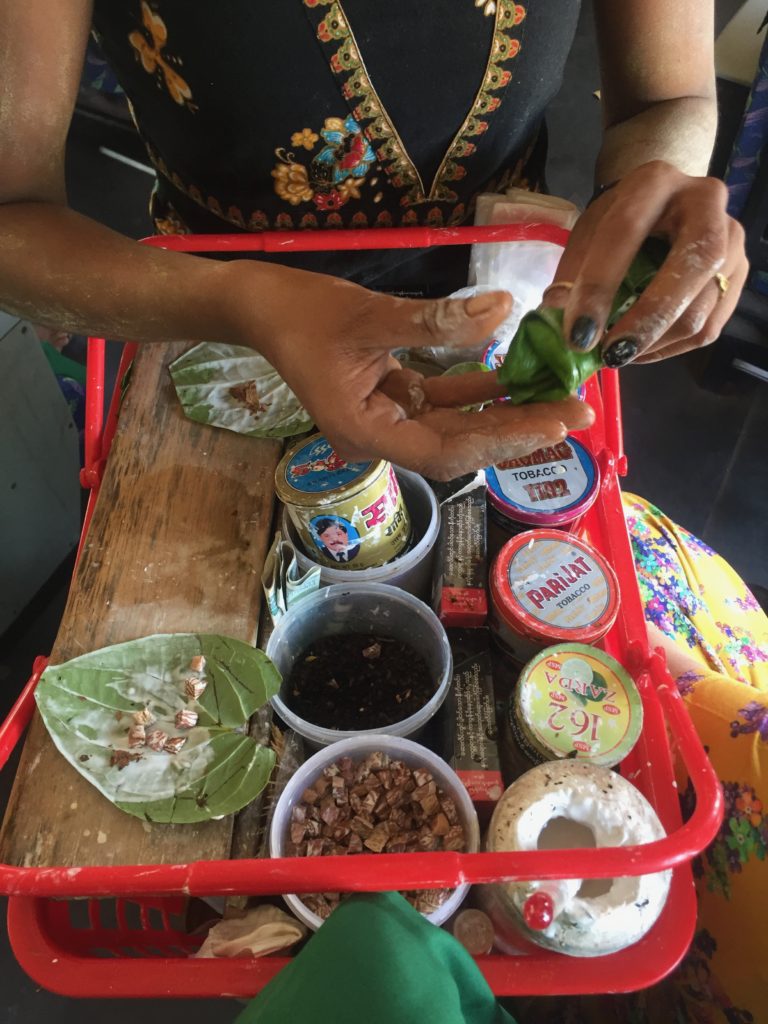
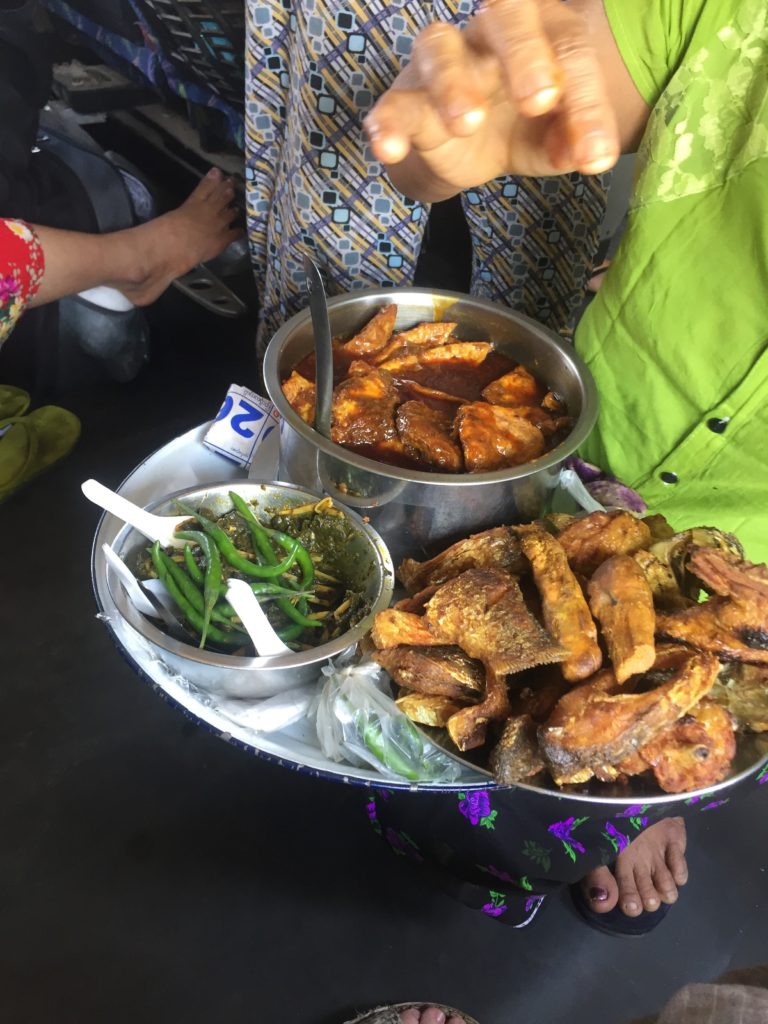
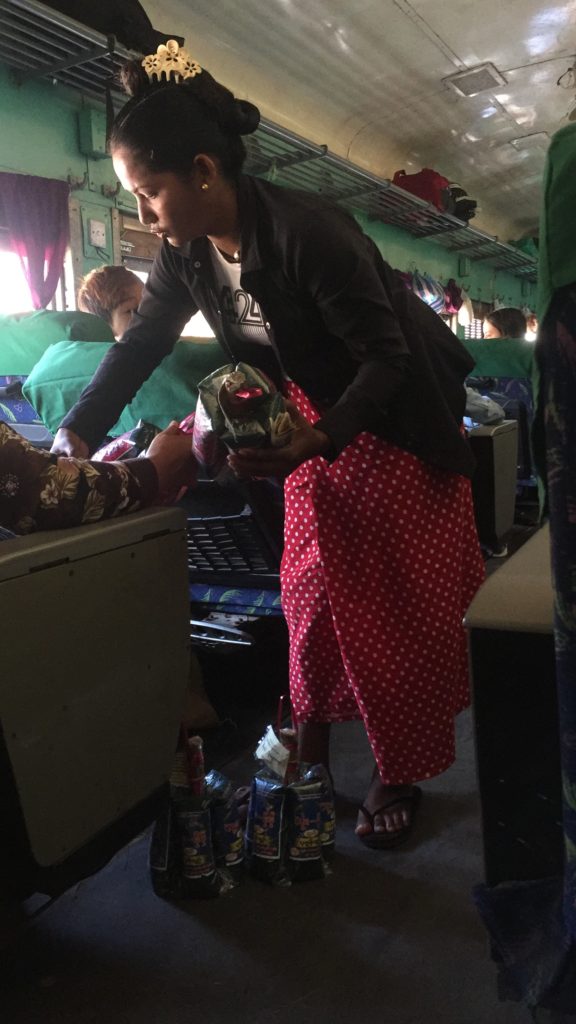
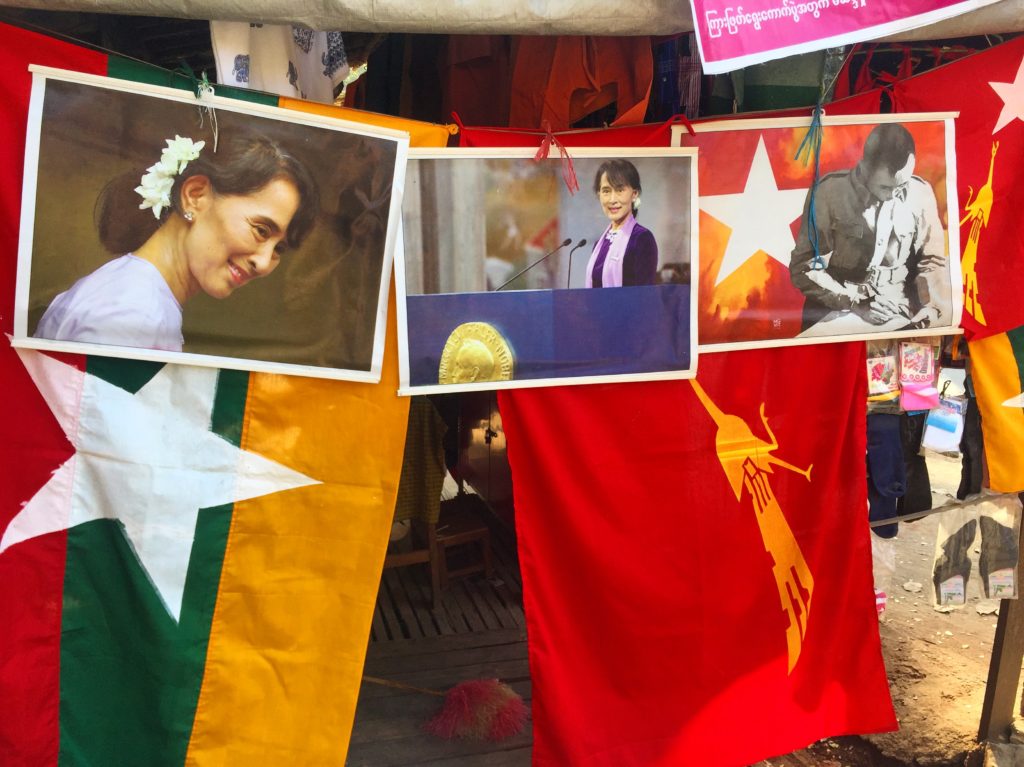
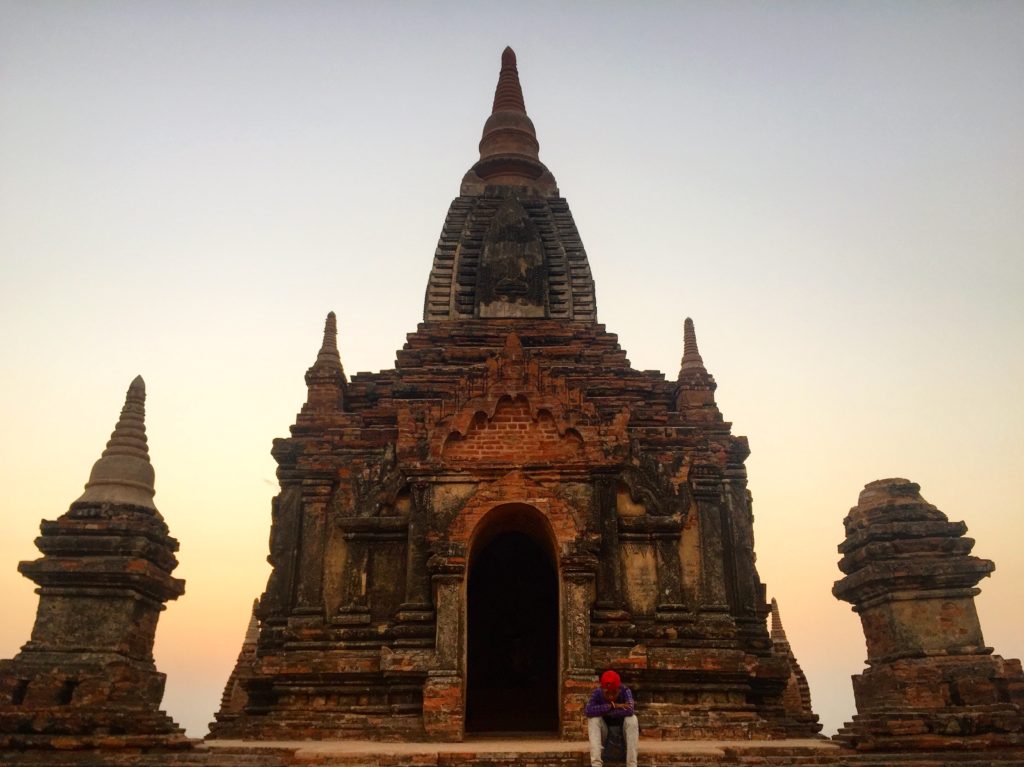
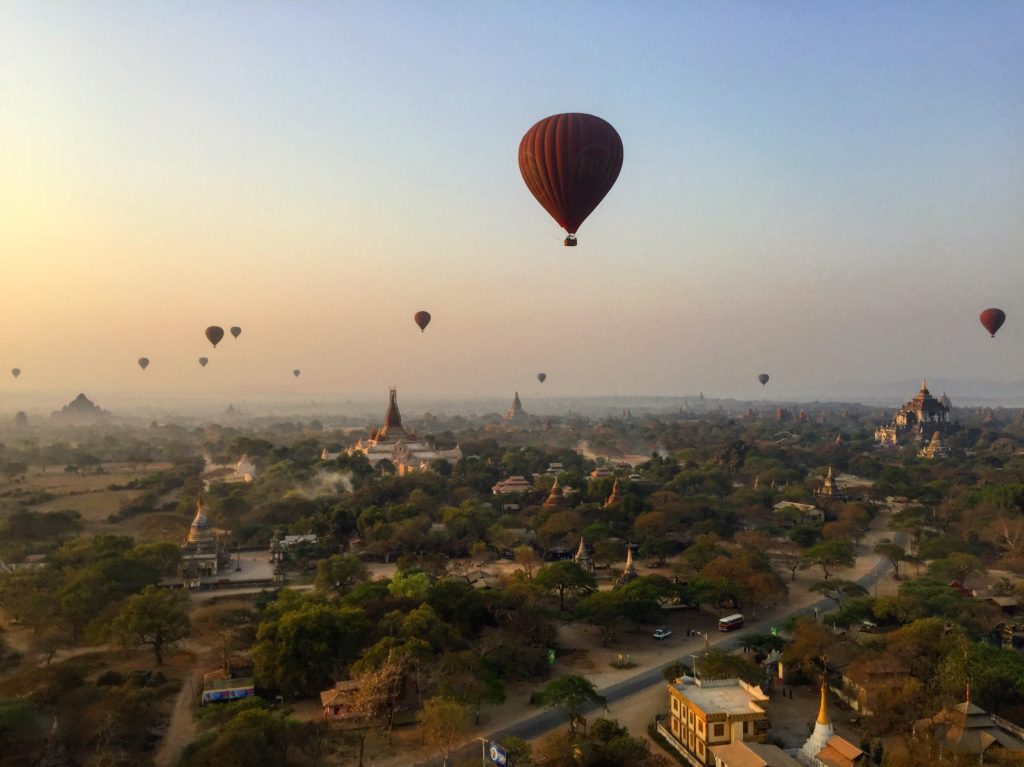
Pingback: Goteik Viaduct by train | Myanmar | No Guidebooks
Pingback: Shampoo Island | Gaung Se Kyun | Mawlamyine | No Guidebooks
Pingback: Naypyidaw | Myanmar's Capital of Weird | No Guidebooks